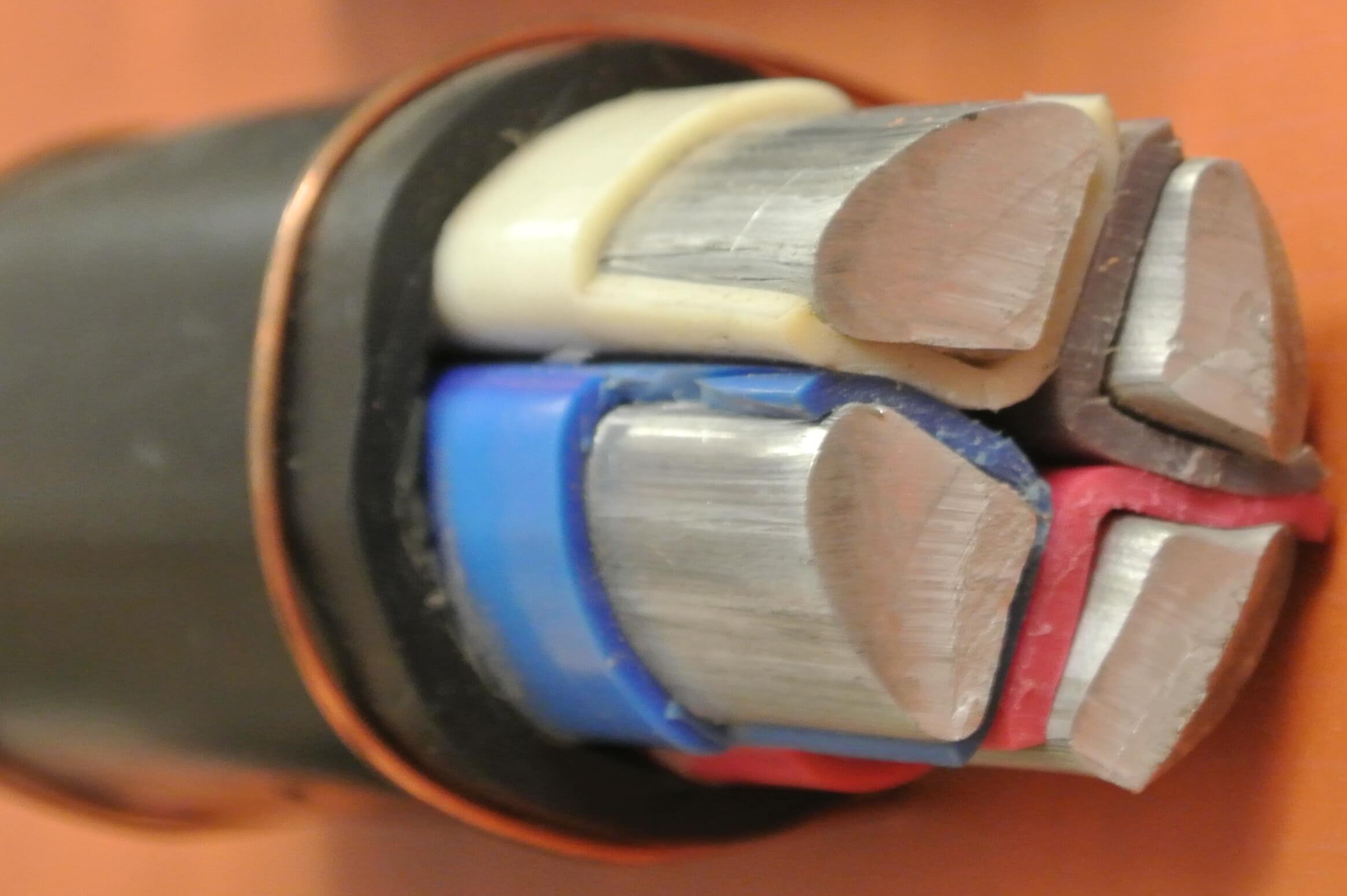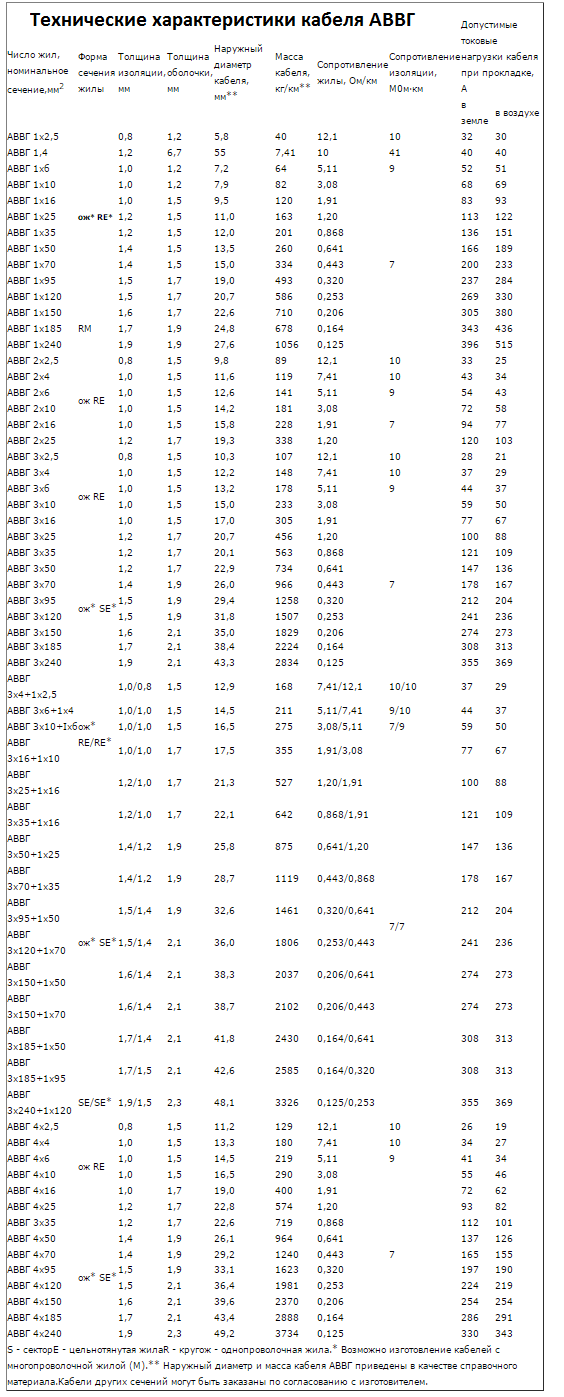Technical characteristics of AVVG cable
How to decrypt abbreviation?
First of all, we will tell you how the labeling of the AVVG cable is deciphered. So, the decryption according to GOST standards is as follows:
- A - aluminum conductors;
- B - insulation of current-carrying veins is represented by a polyvinyl chloride sheath;
- B - the outer shell is also made of PVC plastic;
- G - there is no additional protection for the power cable (bare).
In addition to these four letters, the prefix “T” or “P” may appear in the marking, through a dash. "T" means that the conductor is made in a tropical design (not afraid of mold). The letter "P" makes it clear that the power cable is flat.
After the letters, according to the standard marking of conductors, numbers follow. The digital designation may look as follows: AVVG-660 3 * 25. The first digit (660) is the operating voltage, which can be indicated either in Volts or in kV (0.66). After voltage indicate the number of cores and their cross section. Also in brackets you can notice the prefix "(ozh)", which indicates that the current-carrying conductors are single-wire.
Here is the decoding of the AVVG cable. As you can see, everything is quite simple and clear!
Design features
Now, let's talk briefly about the device of the electric cable. As we have already said, the current-carrying conductors of the conductor are aluminum (this can be clearly seen in the photo). The number of veins can be from 1 to 6, and they can be either single-wire or multi-wire.
Concerning color marking insulation, it meets all GOST standards - zero blue, grounding yellow-green. In order for the outer shell to be separated from the internal insulation without problems, an lavsan tape can be laid between them. The cross section of the conductors may differ, unless the AVVG cable is two-wire. Most often, only one core is smaller (grounding or zero, as in the picture below). In a six-wire electric conductor, 2 smaller conductors are both zero and ground.
Video review of the technical characteristics of the power cable:
main parameters
So, we come to the most important part of the article - a description of the technical characteristics and operating conditions of the AVVG cable. Among the main parameters that you may need for electrical work, there are:
- Rated voltage 660 and 1000 V;
- AC frequency 50 Hz;
- Cross section of cores from 2.5 to 240 mm2;
- Operating temperature from -50 to +50aboutWITH;
- The maximum allowable heating of current-carrying conductors must not exceed + 70 ° С;
- Electrical installation is allowed at temperatures from –15 ° С to + 50 ° С (basic laying condition);
- Service life 30 years;
- Warranty period of operation 5 years;
- Minimum bending radius of 7.5 external diameters of the electric cable;
As for the permissible current load, insulation thickness, mass and active resistance of the AVVG cable, we clearly provided these values in the table:
Application area
Well, the last question that we would like to consider is the purpose of the AVVG cable and the conditions for its laying. This conductor can be used in the following electrical works:
- laying overhead power lines;
- network laying on cable overpasses, bridges and even in blocks;
- electrical installation in partially flooded, damp and dry rooms.
- installation of wiring in explosive and fire hazardous areas.
As for laying the AVVG cable in the ground, it must be borne in mind that this type of electric cable is not armored, so if it is damaged mechanically, it will quickly fail. It is recommended to use an electric cable for underground installation only if there are no significant mechanical loads on the site and the corrosive activity of the soil is low.
So we presented all the main technical characteristics of the AVVG cable, a transcript of its marking and, no less important, the purpose. We also recommend that you familiarize yourself with PVA wire characteristics, which is no less often used by electricians!






